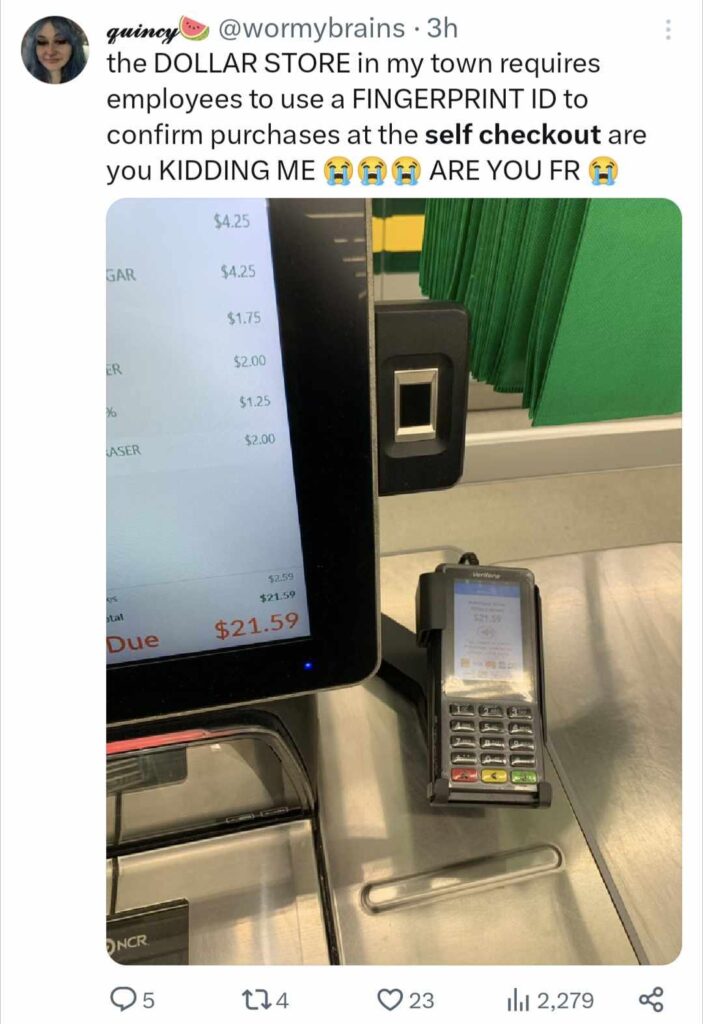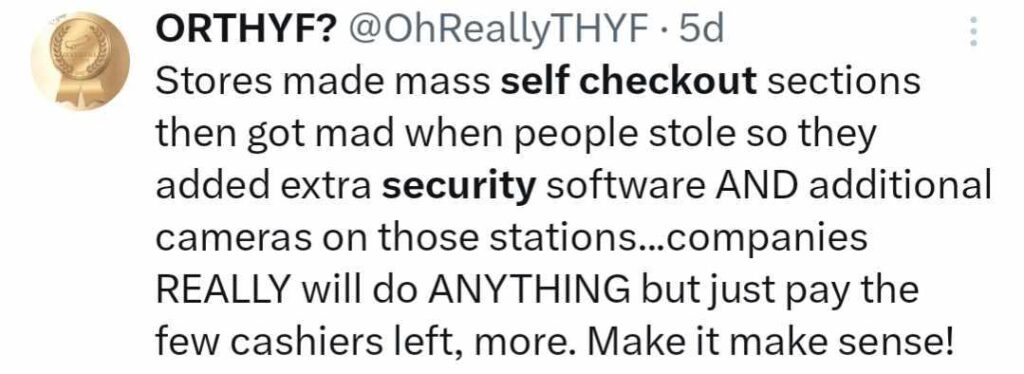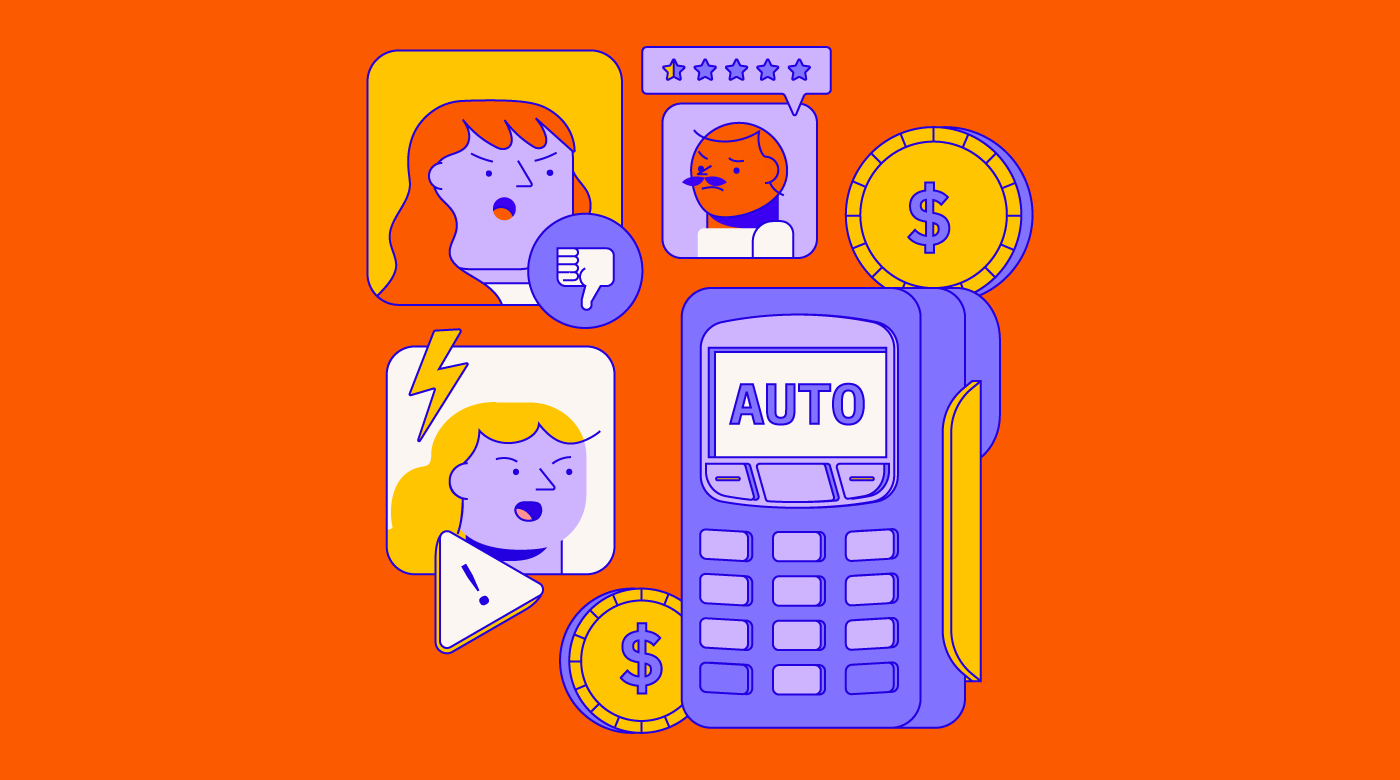Raise your hand if you’ve ever felt personally victimized by the aggressive tone and unnecessary sense of urgency imparted by grocery store self-checkout terminals.
Trust us — you’re not alone on this one.
Over the past decade, self-checkout terminals have taken over grocery stores and big box retailers across the globe. By 2022, a whopping 38% of all checkouts in the United States were of the self-serve variety. At first, it seemed like a brilliant move: substantial cost savings by replacing cashiers with robots, eliminating the much-maligned cashier small talk, and ushering in a new era of fancy robot technology of which George Jetson would surely approve.
As it turns out, neither companies nor customers are entirely content with the change. As far as those projected cost savings go, businesses are now dealing with a sharp increase in shoplifting by putting their faith in the consumer to *not* ring in those organic avocados as granny smith apples — or those flatscreen TVs as granny smith apples. Now, stores like ShopRite, Booths, and Walmart are removing self-checkouts from certain locations and hiring back the humans.
Costco even began hiring more supervisory staff after an increase in people using borrowed membership cards. Other stores installed security cameras and other technology upgrades. This increase in security tactics has left a lot of customers wondering: why not just bring back the cashiers?



Now, an increase in shoplifting obviously doesn’t bode well for business, but unhappy customers are arguably just as detrimental to a company’s bottom line.
So, what is it about self-checkouts that people hate so much? A series of recent studies set out to find the answer — and the results shed a lot of light on what customers value.
Even outside the realm of grocery stores, there’s a lot we can learn from this study to help inform our own CX strategies — whether you’re in online retail, SaaS, or anything else that relies on customer satisfaction. Why do you think people hate self-checkouts, and what could stores do to mitigate those negative feelings?
The People VS. Self-Checkout Machines
The most obvious reason people don’t like self-checkouts is that it requires more effort. Suddenly, they’re tasked with performing duties that the store once paid employees for — and considering the current inflation of food prices, it’s no surprise that customers are feeling swindled.
That tells us something about customer dissatisfaction. But we want to know what makes customers happy and loyal, right? So, a better way of framing the question would be: Why do customers prefer traditional checkouts?
The research points to two main reasons: it’s easier, and customers feel more rewarded for their patronage.
At first glance, this information might not seem terribly groundbreaking to you CXperts. Anyone working in CX can attest to the positive impact of an easy, simple customer journey and a rewarding experience.
But these researchers took their study one step further, uncovering an absolute goldmine of insight:
We also introduce an intervention and show that when customers are primed to perceive the extra expended effort during self-checkout as rewarding, self-checkout shoppers demonstrate the same level of customer loyalty as regular-checkout shoppers.
That’s right, folks: you can cancel out the negative impact of increased effort by rewarding your customers accordingly.
Cue Miley Cyrus’s “The Climb.”
If you can convince your customer that their journey up the mountain was all worth it in the end, they’ll be just as satisfied as those whose journeys were short and sweet.

Show Your Customers Some Love, And They’ll Give It Right Back.
Let’s think about how we can apply this knowledge to optimize customer journeys outside the grocery store, and within the digital realm.
Say you’re rolling out a loyalty app where customers can collect points toward purchases. In turn, you can collect valuable data on purchase history to help inform your CX strategy.
To sign up for the loyalty program, customers must input their data.
Name, date of birth, address... What’s my zip code again? Wait, I have to enter my customer account number? That’s listed on my membership card... in my wallet... *sigh.*
Remember, you have to make the journey worth it! Incentivize completion by offering a reward, like a sign-up bonus of 500 complimentary points or a free item as a token of appreciation. If there’s a bright, shiny light at the end of the tunnel, customers will feel mighty pleased that they made the extra effort.
You can reward your customers for their efforts in a myriad of ways, and if you make sure they feel appreciated, they’re much more likely to keep coming back.
When developing CX strategies, look critically at your customer journey maps to see if any areas may require significant effort on the customer’s end. Keeping things as easy as possible is a goal worth striving for, but a 100% seamless journey isn’t always achievable. To prevent customers from abandoning ship, show what’s in it for them, and deliver on those promises.
Want to learn more about customer rewards, how they work, and why we love them? Read our post on loyalty program basics to explore all the ways you can motivate customers to come along for the journey.

